Surveying seabirds on South Georgia to support conservation
6 March, 2024 Bird Island, King Edward Point
In this blog, science data manager Sarah Manthorpe describes her recent fieldwork survey of seabirds in the Southern Ocean.
As I’m sitting here counting albatrosses from my desk, it feels surreal to think that not long ago, I was whizzing across the water at South Georgia with a camera and drone, determined to get what images we could before the weather changed. I’m hoping that by writing about the experience, we can showcase some of the critical work being done to conserve seabirds in the Southern Ocean.
My colleague Liz Mackley and I were at South Georgia to get images of black-browed and grey-headed albatross colonies, supporting a census that takes place every 10 years, dating back to the 1980s. By getting population estimates of albatrosses in colonies less-frequently visited, we can compare trends at different sites as well as estimate the overall trend across the island group. This allows us to shed light on the effects of incidental mortality (bycatch) in fisheries, climate change and other stressors for these threatened seabirds. The populations at South Georgia have been in decline for decades, and this work will inform future conservation policy, better shaping interventions and efforts to protect them.
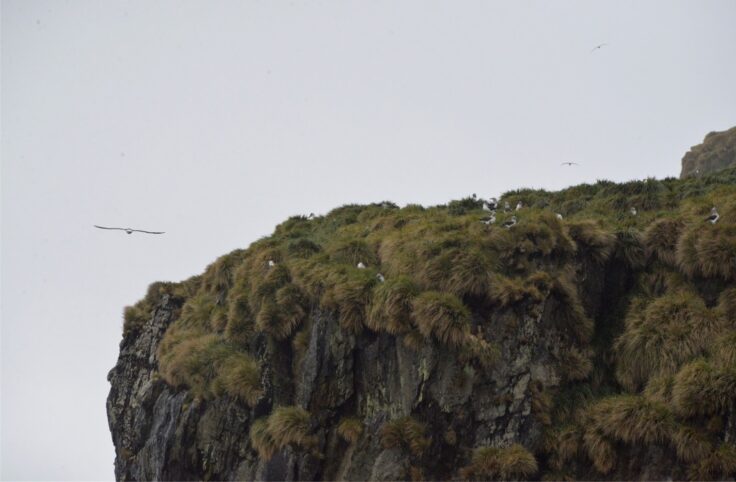
Liz and I were tasked to work from the MV Pharos SG, the South Georgia Govt. fisheries patrol vessel. We would take photos with the still camera and drone either from the ship or a RIB, getting close to the colonies to capture images from similar vantage points to those used in previous surveys.
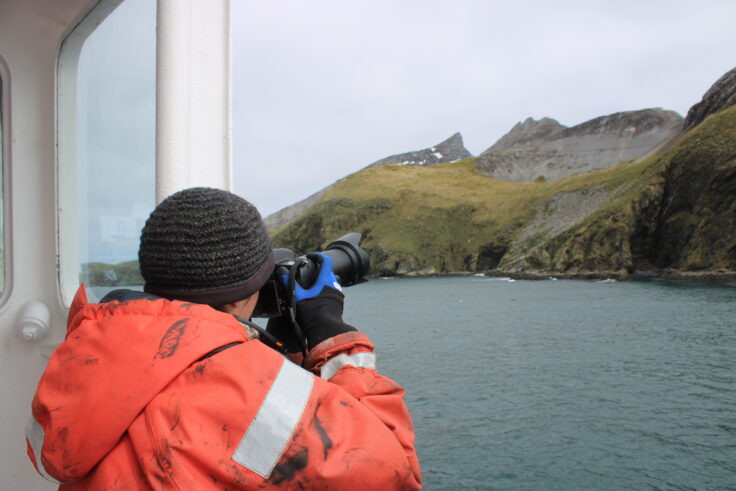
So, with bags and equipment in tow, we headed for the Falklands. We travelled with the incoming team for King Edward Point (KEP) for the 2023/24 season, boarded the Pharos full of excitement for the survey and ready to sail.
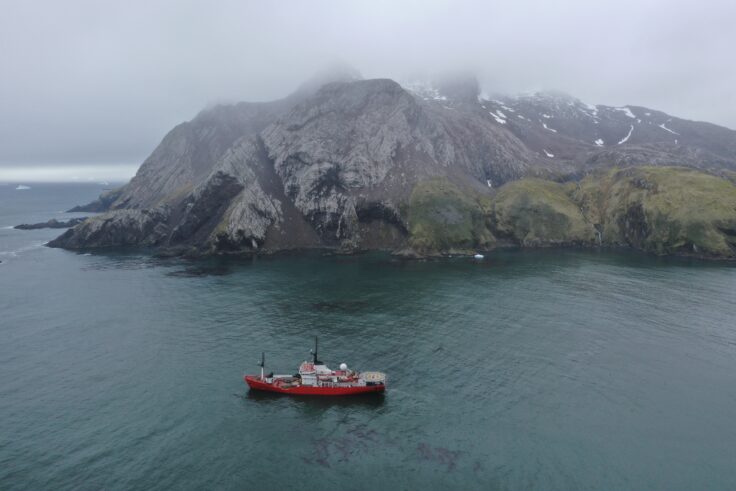
South Georgia gave us a warm welcome, with a spectacular sighting of countless humpback whales before arriving at KEP. We enjoyed a couple of days at the base, celebrating Polar Pride, discussing survey strategy and getting to meet the season’s first fur seal pup.
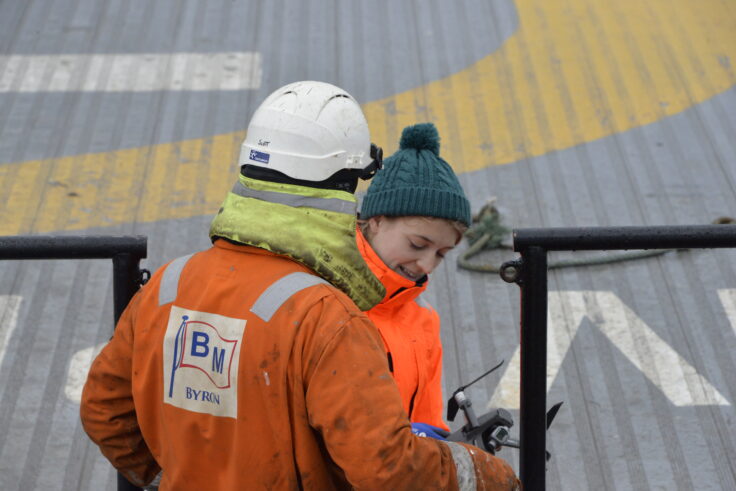
We then sailed to the west of the island, photographing colonies with the camera only (rain and drones don’t mix!). We flew the drone the next morning, our hearts racing as we stood on the helipad, drone in Liz’s hand and controller in mine. We worked the rest of the day in the RIB in sheltered coves along the Paryadin Peninsula, me taking notes for Liz, and Liz catching the drone. The adrenaline and sunshine made time fly by (pun intended)!
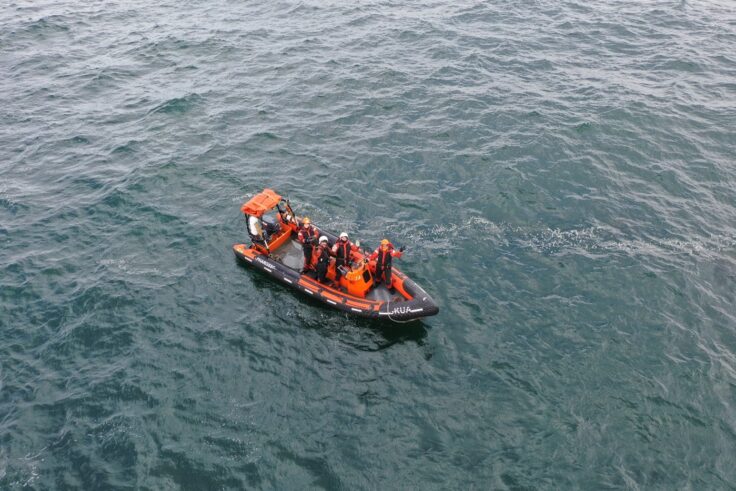
After completing the survey of the northern and southern side of Paryadin, we spent a day focused on Bird Island. Since the waters are well charted and the Pharos could get close to the coast, Liz was able to photograph from the RIB while I flew the drone from the ship. We photographed all the sites with the still camera and surveyed more than planned with the drone, thus a success so far!
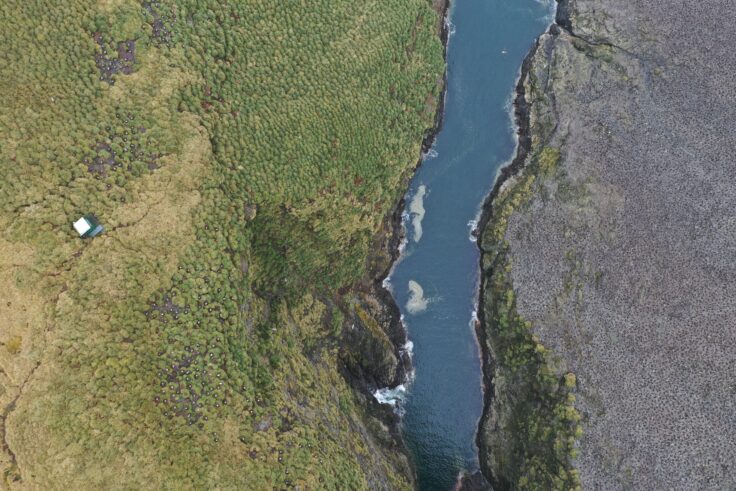
We then headed back to KEP for a couple of days. Our time there was a well-deserved break for us and the Pharos crew, where we had a lovely time in good company. I even got to spend my birthday there, getting cake both on the Pharos and at KEP – quite the treat!
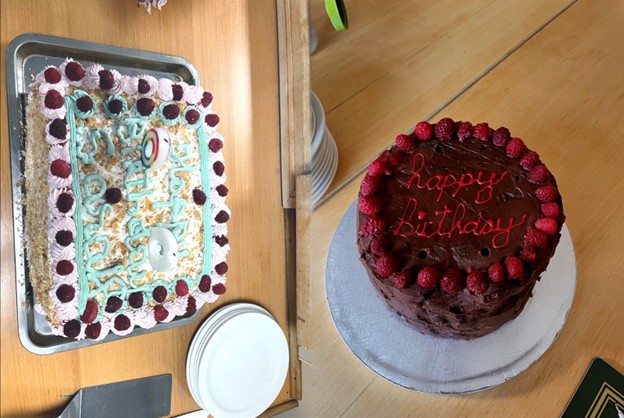
When the weather improved, we headed towards the east, aiming to survey Cooper Island. We were joined by Carrie Gunn from KEP, who was monitoring krill, and Penny Clarke and Nico Lewin, who were surveying whales with drones. This meant we could support each other’s projects, filtering samples from the CTDs and chatting about best practices for drones.
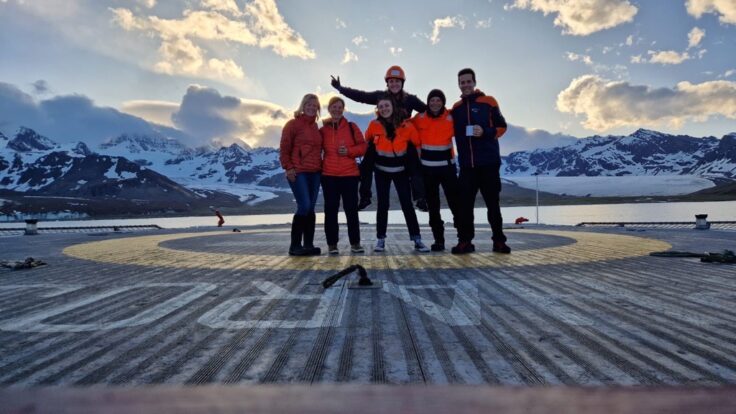
Cooper Island was our last and most difficult site to survey. Not only was the topography complex, but we couldn’t even get close with the Pharos. It had also snowed, making it difficult to find albatross colonies, even with binoculars! Not to mention the wind chill was -6 °C, meaning we (and the drone) were a little cold… Deteriorating weather meant we stopped early, revisiting the following day. Some snow had thankfully melted, giving us an opportunity to finish up. Our final RIB ride was filled with pride, high fives and smiles.
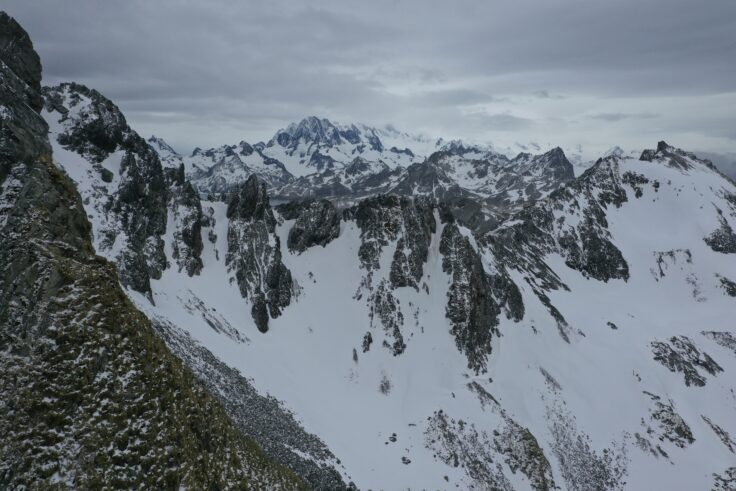
We headed back to KEP, where we picked up the outgoing winterers before sailing to Stanley. We reflected on all the support we had received. The Pharos crew were incredibly knowledgeable and helpful, as well as great company. The teams at KEP and Grytviken were also lovely, making us feel at home with scenic hikes, board games, dance sessions and movie nights.
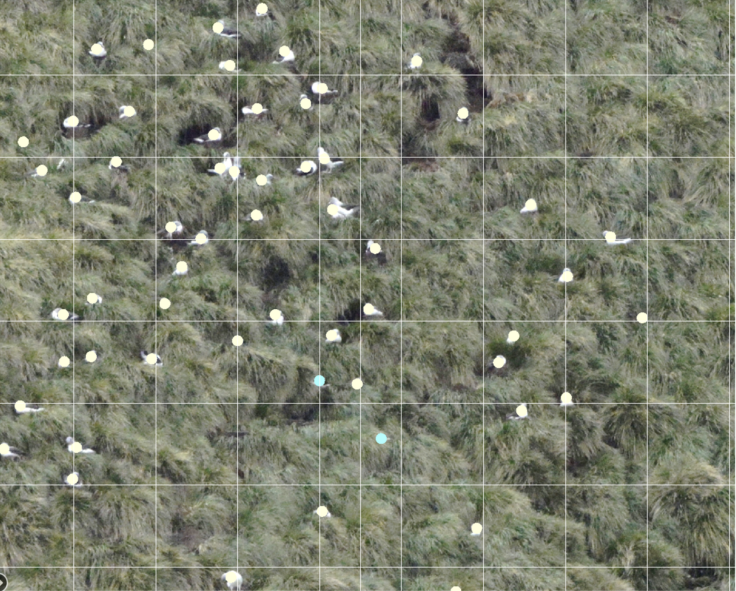
Now, we are reviewing the images and playing species bingo! The images are annotated manually, and counts will be compared to previous surveys. We are also hoping to test the efficacy of drone imagery and analyse the spatial data drone imagery provides. It has been a privilege to participate in this survey, and we hope the results will support conservation efforts.